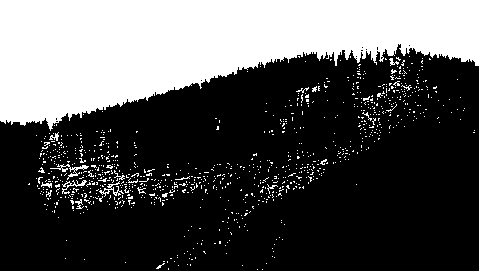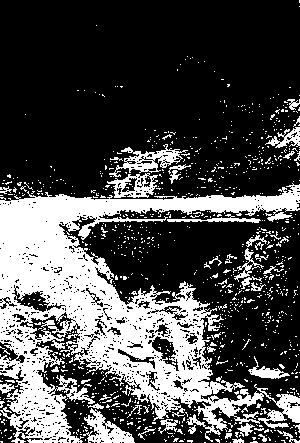This section of the manual arises from studies carried out in Austria and Bhutan into the use of the excavator as the main construction machine for forest roads and the environmental benefits that ensue.
The objective of this study was to thoroughly document and establish data on "environmentally sound road construction applying advanced operating methods and tools as currently used in mountainous terrain in Austria" as an alternative to the "traditional road construction methods" in sensitive forest ecosystems.
Since the opening up of forests by forest roads and a permanent forest road network is a prerequisite to introduce sustainable forest practices, another aim of the case study was to demonstrate that forest engineering can serve as a tool for Sustainable Forest Management (SFM) if proper road design, construction and maintenance techniques are used. The introduction of these advanced techniques will meet the overall objective of preventing environmental problems associated with forest harvesting operations in mountainous terrain and elsewhere.
Photo. Well-planned alignment and proper design of forest roads provide acceptance of forest harvesting operations. - Perfect road alignment prevents scars inflicted on the landscape

Photo. Critics of forest roads often point to excessive road building, evident on many hillsides, due to lack of co-operation between landowners - failures in the past

Serpentine alignments are often unavoidable in mountainous terrain due to slope features, but the number of switchbacks in a the route for a road must be restricted to the absolute minimum. Poor road alignment which leads to zigzag roads with too short distances between switchbacks, are hopefully all in the past (see Photos 2 and 3). They not only inflict scars on the landscape and are difficult to travel but they are also potential sources for erosion and of landslides (Sedlak, 1996).
Growing concerns on environmental issues and the fact that forest roads are unquestionably the most damaging feature of timber harvesting operations (Dykstra & Heinrich, 1996) have forced and encouraged the development of new road construction methods and blasting technologies which now are exclusively used in forest road construction in the province of Salzburg.
Photo. Zigzag roads with too short distances between switchbacks due to lack of co-operation between landowners unnecessarily increase the area dedicated to roads

Drainage from the road surface will be provided by a crowned road, a hillside ditch and culverts (40 cm 0) spaced at 50 m distances. In road sections where streams, either intermittent or perennial, are to be crossed the dimension and spacing of culverts should be adjusted to the actual need for adequate water drainage.
Seeding of grass is considered obligatory. Fill slope protection will be provided by a debris cover wherever possible. Retaining structures will be built up with boulders by the excavator wherever needed for slope stabilisation alongside the road (for details see chapters 3.2 and 3.7).
Photo. Fords with integrated culverts are sometime specified as they meet the requirements of normal run-off as well as of high floods (Winkler, 1992)

Figure 1. Regular cross-section for earth and rock
The cross section both for earth and rock recommended is shown in figure 1. a subgrade width of 4.0 m and a running surface of 3.0 m has been specified.